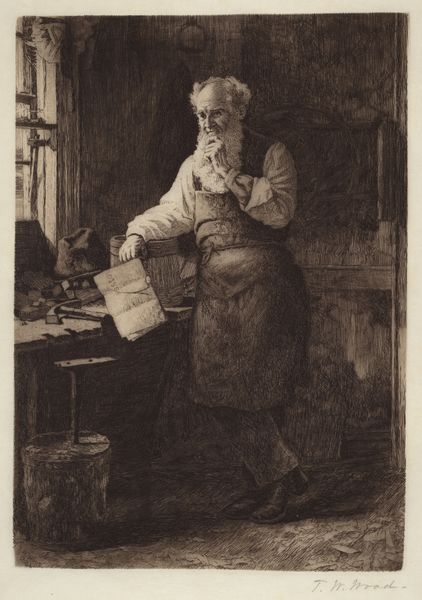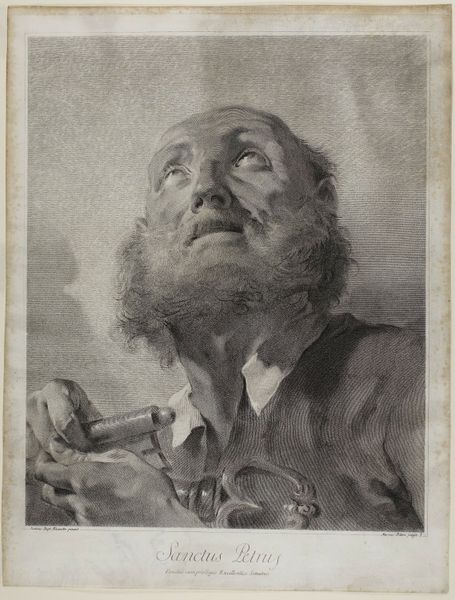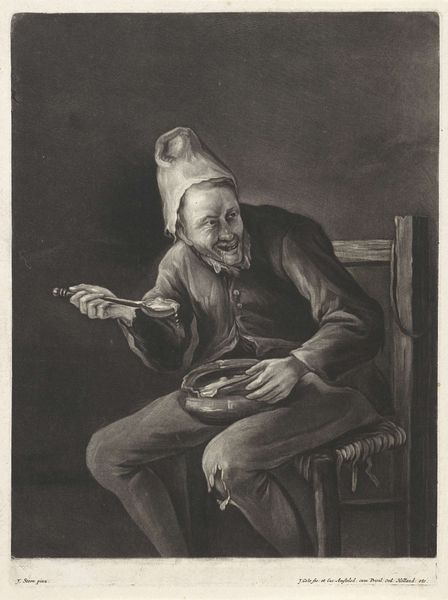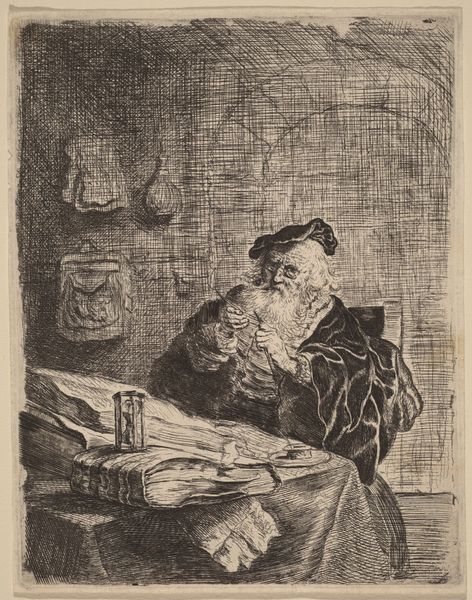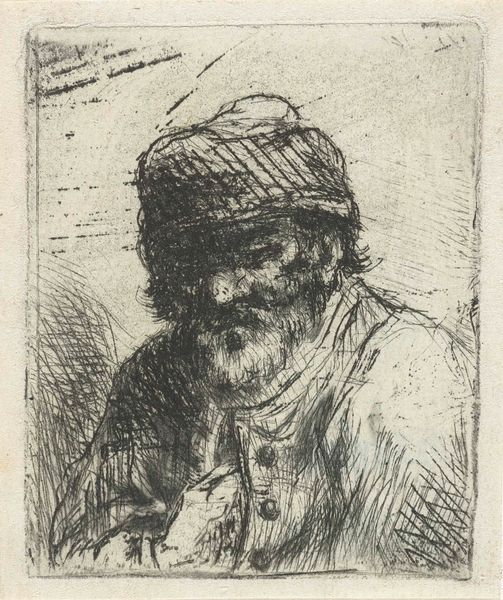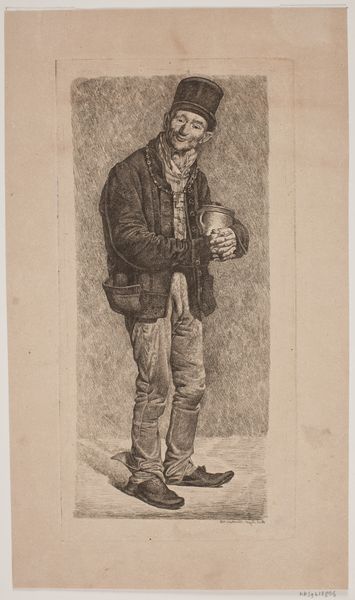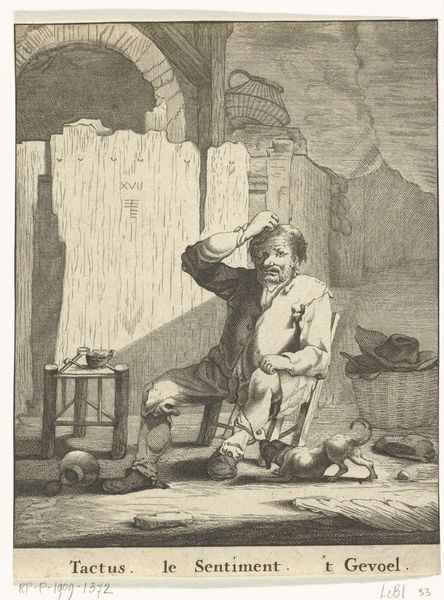
print, engraving
#
portrait
#
dutch-golden-age
# print
#
charcoal drawing
#
figuration
#
genre-painting
#
engraving
#
realism
Dimensions: height 135 mm, width 94 mm
Copyright: Rijks Museum: Open Domain
Editor: So, this is "Laughing Drinker" by Cornelis Dusart, created sometime between 1670 and 1704. It’s an engraving. The jolly expression is so captivating. How do you interpret this work, especially considering the social context of Dutch Golden Age genre paintings? Curator: What immediately grabs me is the means of production. Engraving, as a relatively accessible printing method in that era, meant these images circulated widely. This wasn’t an artwork exclusively for the elite. Consider the materiality itself: the copperplate, the ink, the paper. What story do these humble materials tell about the burgeoning merchant class and their desire for representation? Editor: That’s interesting, I hadn’t thought about the materials having a connection with class. Do you mean this artwork allowed a wider population access to… art, or images? Curator: Exactly. Think about it. He's not a king, not a saint, just an ordinary, albeit jovial, person, reproduced en masse. His laughter, his pipe, the very act of drinking – through printmaking, such everyday life become marketable, consumable images. Look at the rough texture achieved through the engraving, meant to be readily available, how that impacts your reading of “high art.” Editor: I see what you mean. It makes you consider the work and labor involved in making art more accessible. I guess, in a way, it democratizes art in a really early form? Curator: Precisely. This challenges our preconceived notions about fine art and allows us to recognize value and artistry within everyday objects. This print isn't just about a "laughing drinker;" it's about how images and ideas circulate and how art could start being “consumed”. Editor: Thanks, that materialist perspective is insightful and it reframes how I see the print and how those everyday images had the opportunity to circulate widely. Curator: It has broadened my horizons too, reminding me that art exists at a place where social context and methods of making and consumption all meet.
Comments
No comments
Be the first to comment and join the conversation on the ultimate creative platform.


